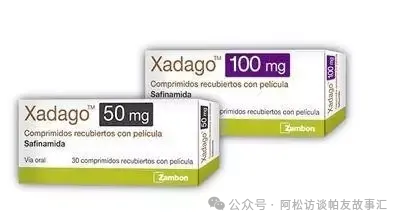
1. Introduction
Parkinson's disease (PD) is a chronic degenerative disease of the nervous system that is common in middle-aged and elderly people. The main pathological features are significant degeneration and loss of substantia nigra dopaminergic neurons and degeneration of substantia nigrac-striatum dopaminergic pathway, resulting in a significant decrease in striatum dopamine transmitter levels. With the deepening of medical research, more and more drugs are being developed to relieve the symptoms of Parkinson's disease and improve patients 'quality of life. Among them, safenamide, as a new non-catecholamine, reversible monoamine oxidase B(MAO-B) inhibitor and a weak dopamine reuptake inhibitor, is highly selective and can increase extracellular dopamine levels in the striatum. This drug can be used as an add-on treatment to levodopa when patients with advanced Parkinson's disease have motion fluctuations, and can also be combined with other anti-PD drugs. It has received widespread attention since its inception.
2. Mechanism of action of safenamide
Safenamide exerts its anti-Parkinson's disease effect mainly through two mechanisms.
1. Reversible inhibition of monoamine oxidase B(MAO-B)MAO-B is one of the key enzymes involved in dopamine degradation in the brain. Safenamide can reversibly inhibit the activity of MAO-B, thereby reducing the degradation of dopamine and increasing the content of dopamine in the brain, thereby improving the symptoms of dyskinesia in patients with Parkinson's disease.
2. Weak dopamine reuptake inhibitors: In addition to inhibiting MAO-B, safenamide can also inhibit the reuptake of dopamine by dopamine transporters to a certain extent, allowing more dopamine to remain in the synaptic gap, prolonging its action. Time, further enhancing the efficacy.

3. Clinical application
Safenamide has been approved by many countries and regions for the treatment of Parkinson's disease, especially as an adjunct to levodopa (L-DOPA) for symptom control in patients with advanced Parkinson's disease. Clinical trials have shown that safenamide can significantly improve patients 'motor function, such as reducing the "off" period time and increasing the "on" period time, and reducing the incidence of dose-dependent motor complications (such as dyskinesia) of levodopa. In addition, safenamide has also been shown to improve non-motor symptoms (such as depression, cognitive decline) in patients with Parkinson's disease.
4. Safety and precautions
The overall safety profile of safenamide is good, but like all drugs, attention should also be paid to possible adverse reactions when used. Common adverse reactions include nausea, insomnia, dizziness, etc., but are usually mild and transient. For patients with severe renal impairment, use with caution and adjust the dose. In addition, safenamide may interact with certain drugs (such as antidepressants, antihypertensive drugs, etc.), so your doctor should be informed in detail about all drugs you are using before use.
5. Conclusion
As a new anti-Parkinson's disease drug, safenamide provides new treatment options for patients with Parkinson's disease through its unique dual mechanism of action. It can not only effectively improve patients 'motor function, but also relieve non-motor symptoms to a certain extent and improve patients' quality of life. However, patients still need to pay attention to monitoring adverse reactions during use and follow doctor's advice to use drugs rationally. With the deepening of research, it is believed that safenamide will play a more important role in the treatment of Parkinson's disease.